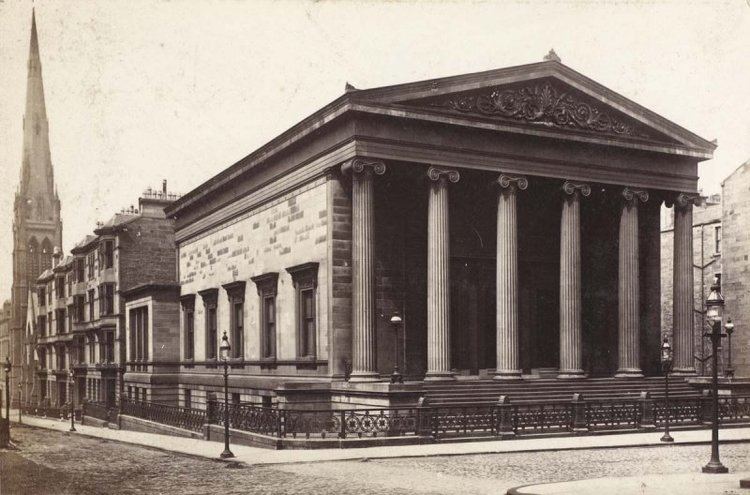Nationality British Occupation Architect | Awards FRIBA Name John Burnet | |
 | ||
Born 27 September 1814 Kirk o' Shotts Died 15 January 1901Glasgow Practice John Burnet and Son, later Sir John Burnet & Partners Buildings Glasgow Stock Exchange; Clydesdale Bank, Glasgow; Govan Burgh Chambers | ||
Encendidos rev john burnet 1 de 2 tema la llave del crecimiento la unidad
John Burnet (27 September 1814 – 15 January 1901) was a Scottish architect who lived and practised in Glasgow. He was born the son of soldier and trained initially as a carpenter, before becoming a Clerk of Works. He rose to prominence in the mid-1850s.
Contents
- Encendidos rev john burnet 1 de 2 tema la llave del crecimiento la unidad
- Armenia colombia rev john burnet tema como en el dia de pentecostes
- Biography
- Notable works
- References
Burnet designed many of Victorian Glasgow’s public buildings, employing a range of styles, including Neoclassical, Gothic, Renaissance, Italianate and Scottish Baronial . He commissioned many sculptors to adorn his buildings, among them John Mossman and John Crawford .
Armenia colombia rev john burnet tema como en el dia de pentecostes
Biography
John Burnet was born at Craighead House, Kirk o' Shotts on 27 September 1814. He was the son of Lieutenant George Burnet, a soldier in the Kirkcudbright and Galloway Militia, and Margaret Wardlaw, who was the daughter of a Dalkeith merchant, John Wardlaw. John Burnet was educated at Dunipace Parish School. He later took an apprenticeship as a carpenter, graduating to architecture and becoming a clerk of works in the Alloa-Clackmannan area.
Burnet was largely self-taught as an architect. He worked for the Architectural Publication Society's Dictionary and through this work he had access to a library of architectural work by Jean-Nicolas-Louis Durand, Paul Letarouilly and Eugène Viollet-le-Duc. It is also known that Burnet travelled and sketched in Germany, France and Italy.
In 1845 he married Elizabeth Hay Bennet, the daughter of Lindsay Bennet, a Leith merchant. They had five children. The eldest, George Wardlaw, grew up to become Sheriff Substitute of Aberdeen but predeceased his father in an accident on a bamboo bicycle. His second son Lindsay Burnet, a mechanical engineer, and his youngest daughter Elizabeth also died before him. He had another daughter, Margaret. The most well-known of his children was his youngest son, John James Burnet (1857–1938), who himself became an influential Modernist architect.
In the mid-1850s John Burnet (senior) rose in prominence with his designs for Glasgow buildings such as the Greek temple-style Elgin Place Church, the Clapperton/Middleton warehouse on Miller Street, and Madeira Court on Argyle Street, which was shows influences of the work of Charles Wilson. He won commissions in the 1860s from Glasgow merchants and shipowners, building large baronial houses for them at Auchendennan, Arden, Kildalton and Kilmahew.
Burnet became an accomplished Gothic designer, which is evident in his designs for Woodlands Church and the Glasgow Stock Exchange.
Burnet became a Fellow of the Royal Institute of British Architects (FRIBA) in 1876.
In 1882, he formed and architectural partnership with his son John James Burnet (1857–1938). As his son John James took a greater role in the architects' practice, Burnet was less active in the design of buildings, acting increasingly as a consultant. In 1886 John Archibald Campbell joined the partnership, and around 1889 Burnet senior went into semi-retirement at the age of seventy-five.
John Burnet died in Glasgow on 15 January 1901, leaving moveable estate of £3,210 5s 2d.
Notable works
Three of Glasgow's most important buildings are credited to Burnet Senior in his later years: the Clydesdale Bank headquarters in St Vincent Place, the Merchants' House and the Union Bank of Scotland building (the latter assisted by his son).
Among his surviving works are:
Other work has been destroyed or demolished, including:
He is buried in the Western Necropolis.
